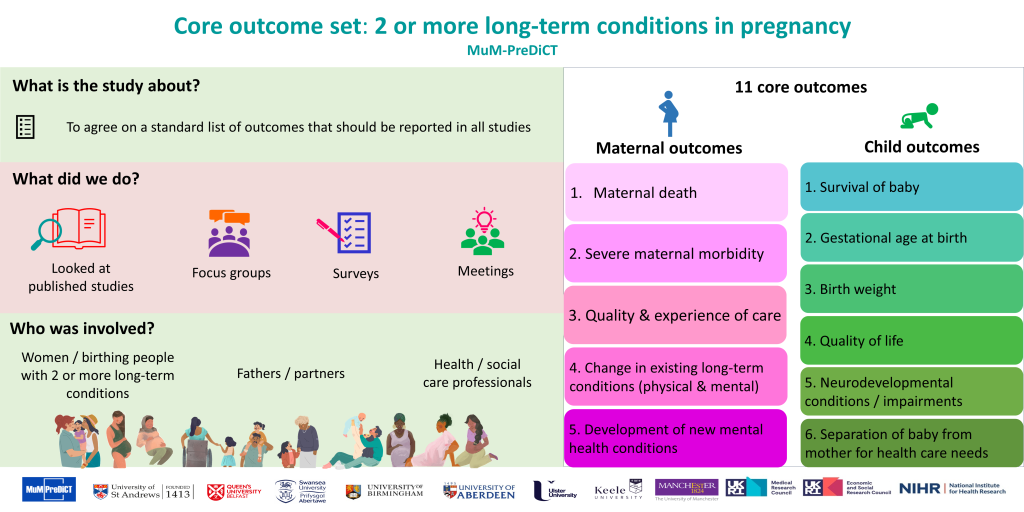Better research for pregnant women living with long-term health conditions
19 January 2024
HDR UK-funded researchers consulted widely to discover the most important things to research on this under-served group of women.
The challenge
Pregnant women with two or more long-term physical or mental health conditions are not well studied, despite making up around one-fifth of all UK mums-to-be. Currently, there’s no standard set of outcomes (ie what happens to these women and their babies during their pregnancy and after the birth). This makes it difficult to do research to get the best, ‘big picture’ evidence for which treatments and interventions will work for this group of women and which won’t.
The solution

Data scientists worked with clinicians, members of the public, charities and pregnant women living with two or more health conditions to carry out an in-depth study. Its aim was to get a consensus of everyone’s views of the most important outcomes that should be measured, reported and compared across all research on this group.
The researchers did a systematic literature search and found 26 studies in pregnant women with two or more conditions and their babies and the 185 outcomes reported from them. They gathered the views of people with lived experience, clinicians and researchers through three focus groups and two rounds of surveys, both in the UK and internationally. The authors made particular efforts to publicise the survey to a range of charities and support groups to involve as many people as possible. Patient and public involvement representatives contributed throughout, from study and survey design to advising on the ethics application and focus group and survey recruitment.
The work generated 11 priority outcomes, including death of the mother or the baby, severe illness of the mother, quality and experience of care, and separation of the baby from the mother for health care needs.
The impact
Researchers can now be confident that the standard set of outcomes for this under-served group of women and babies are the most important ones to focus on, particularly for those women with lived experience. The next step will be to find standardised ways to measure these outcomes. In the longer term this will make it easier to combine data from different studies to measure the same things on a larger, more meaningful scale.

The research was led by Dr Siang Ing Lee, a clinical research fellow from the HDR UK-supported MuM-PreDiCT collaborative research group. MuM-PreDiCT is already using the findings to guide which outcomes will be measured in its research on anonymised, routinely collected healthcare data across all four UK nations. Dr Lee said:
“The ultimate aim is for researchers across the whole world who are studying pregnant women to monitor their conditions, they will now measure and report the same outcomes. That is really important. Firstly, because we worked with stakeholders, we know we’re measuring outcomes that matter, not just to researchers or clinicians, but also to people with lived experience.
What we’re trying to do is to create an infrastructure where we have a set list that makes it easier for researchers when they want to study this topic. They will be able to say ‘OK, this is what women felt was important, what clinicians on the ground felt was important. So let’s measure it. And then we can compare our study with someone else’s, across the pond or in other countries’.”
What the impact committee said
The committee were impressed with the thorough, rigorous approach the authors took to developing a core outcome set. They also praised the considerable efforts the researchers had made to involve so many voices, by consulting as widely as possible and involving and engaging patients and the public at each stage.



